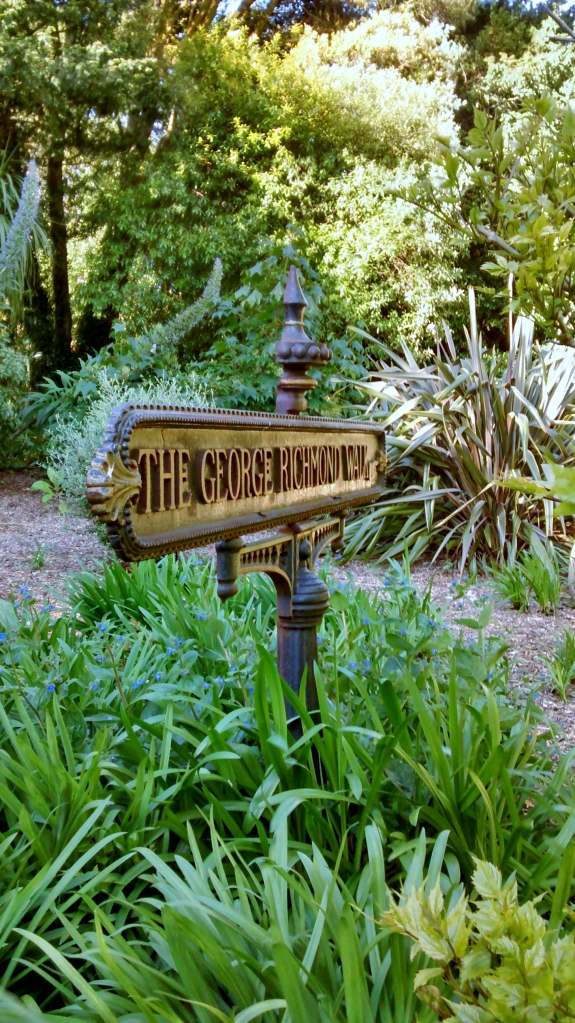
Anybody who works in an academic environment will tell you that it can be very difficult to assemble academics in one location at the same time, so the PLUS away day is a rare yet anticipated event in the palaeo calendar.
Following tradition, the away day took us out of the office and into the surrounding countryside, often in the direction of a famous Quaternary site (and usually a nearby pub or cafe!). This year the group ventured over to the Isle of Wight where our very own Rob Scaife, who has worked extensively on deposits in and around the area and who happens to be a local resident on the island, took the role as Quaternary tour guide.
Here is Rob recounting the story of the Quaternary deposits in the area:
After arriving at Cowes, the group travelled to the eastern end of the Island and assembled at the Crab and Lobster Inn at the tip of Bembridge Foreland to see one of the best coastal exposed raised beach sections in Southern England.

This forms the lower of two brackish and marine sequences at Bembridge. The earlier (MIS 11 or 13) and higher sequence at Bembridge School at 38-40m OD is not exposed but was first noted in a sewer trench in 1924 (Jackson). This produced an interesting plant macro assemblage from a post temperate interglacial phase which included spruce and Arctic buttercup. The site was re-examined by Holyoak and Preece (1983) and Preece and Scourse (1987), also producing important pollen results. The sediment unit was designated as the Steyne Wood Clay formation and is thought to correlate with the Slindon-Goodwood raised beach in West Sussex. The raised beach which the group examined is at lower altitude and is exposed in the cliff which runs along the coast from Bembridge Foreland point (near the Crab and Lobster Inn) and is of Ipswichian (MIS 5e) date. It consists of well-bedded, orange-white sand with flint pebbles which dip to the north-east by 8-10 degrees. These are overlain by soliflucted Devensian sands and gravel. It is suggested that this is a storm beach which rises up to a palaeocliff cut into the Oligocene Bembridge Marls. Overall, this is a fining upward sequence and the gravel unit is overlain by a thin (to 1m) silty clay and organic unit which has produced pollen from two coastal exposures to the north east of the Foreland Point. Preece and Scourse (1987) and Preece et al. (1990) produced a pollen sequence which is of late temperate age containing substantial Carpinus (hornbeam) which is diagnostic for the Ipswichian.

A strong salt marsh element was also observed. Wenban-Smith et al. (2005) re-examined a similar sequence which we were also able to examine in a recent cliff slide and to observe the lower grey silt and the overlying well preserved peat of about 25cm thickness. A similar, nearby, exposure analysed by Rob Scaife (in Wenban-Smith et al. 2005) failed to produce hornbeam in any quantity while oak and hazel with field maple (Acer) indicated an early rather than late temperate age for this profile. A number of OSL dates from these exposures confirm that the sequences, which we saw in section, are indeed of Ipswichian (MIS 5e) date.
We were blessed by excellent Island weather on a day when the predictions were dire. After our coastal walk we departed for our meeting at Ventnor Botanic Garden towards the southern tip of the Island. The gardens were placed under the management of Ventnor Botanic Garden CIC in 2012 and the many changes which have taken place mean the gardens are now truly flourishing. The gardens have their own microclimate allowing the cultivation of many exotic plants from around the globe.

Whilst at the gardens, the group got caught up on each member’s activities since we last met and discussed exciting and new opportunities which might arise in the coming year. The afternoon was spent discussing topical papers which covered the wide interests of the PLUS members (from the vole clock to transfer functions!). The meeting was closed with a guest lecture by Mary Edwards for the garden’s Botany club where she discussed the flora and fauna of Siberia during the Pleistocene. The interest generated by the audience into Quaternary science suggests that we may have some budding palaeoecologists in future years!



